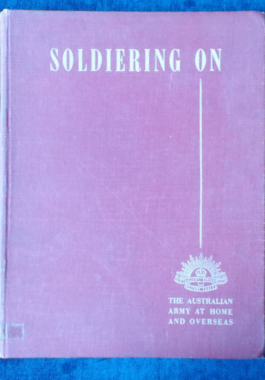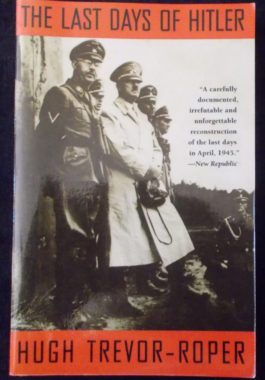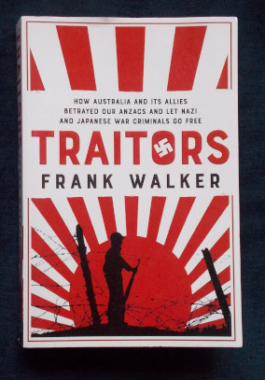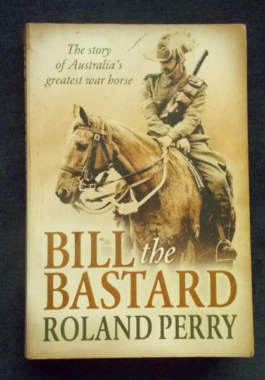- Sorry, this product is unavailable.
-

 Blitzkrieg: Traces the origins of the war starting with the Armistice at Compiègne in 1919, covering the rise of totalitarianism in Europe, the first terrible months of the Blitzkrieg, the imperialistic aggression of Japan in the Far East, the period of Allied appeasement, the evacuation of Dunkirk and the fall of France. Siege: Begins with the dogged and courageous stand of the British against the onslaught of the Nazi war machine, the war in the North Atlantic and Mediterranean, the invasion of the Balkans and Greece, the harsh and brutal war in the North African desert, the suicidal German attack on Russia, the cruelty of the winter war and the attack on Pearl Harbour. Counterattack: The initial period of the Axis reversals and the first steps on the Allied road to victory; the three great turning points of the war ( Stalingrad, Midway and El Alamein) Rome has fallen; the Nazis are reeling under the Russian counter-offensive and the first of the costly, bloody Pacific campaigns. Victory: The last stages of the war in both the European and Pacific theatres; the Allied landing on the beaches of Normandy, the battle of France, the Red Army offensive, the Yalta conference and the capitulation of the Third Reich, concluding with the bitter Pacific Island campaigns, MacArthur's retrurn to the Philippines, the dropping of the atomic bomb and Japan's surrender. Each volume contains rare photographs; over four volumes, 500 photographs and 100,000 words.
Blitzkrieg: Traces the origins of the war starting with the Armistice at Compiègne in 1919, covering the rise of totalitarianism in Europe, the first terrible months of the Blitzkrieg, the imperialistic aggression of Japan in the Far East, the period of Allied appeasement, the evacuation of Dunkirk and the fall of France. Siege: Begins with the dogged and courageous stand of the British against the onslaught of the Nazi war machine, the war in the North Atlantic and Mediterranean, the invasion of the Balkans and Greece, the harsh and brutal war in the North African desert, the suicidal German attack on Russia, the cruelty of the winter war and the attack on Pearl Harbour. Counterattack: The initial period of the Axis reversals and the first steps on the Allied road to victory; the three great turning points of the war ( Stalingrad, Midway and El Alamein) Rome has fallen; the Nazis are reeling under the Russian counter-offensive and the first of the costly, bloody Pacific campaigns. Victory: The last stages of the war in both the European and Pacific theatres; the Allied landing on the beaches of Normandy, the battle of France, the Red Army offensive, the Yalta conference and the capitulation of the Third Reich, concluding with the bitter Pacific Island campaigns, MacArthur's retrurn to the Philippines, the dropping of the atomic bomb and Japan's surrender. Each volume contains rare photographs; over four volumes, 500 photographs and 100,000 words. -

It was at Dunkirk that Toosey's charisma and fortitude were first noted and in 1941 he was given command of an artillery regiment. Sent to fight in the Far East he and his men were embroiled in the battle for Singapore and were taken prisoner after the island's fall in 1942. The Japanese, scornful of the Allied forces for surrendering, determined to make use of the new workforce now at their disposal. Toosey was sent to Thailand to command the 'bridge camp' at Tamarkan where he was ordered to supervise the construction of two railway bridges over the river Khwae Mae Khlong. Starvation rations and harsh working conditions mean that dysentery and cholera were rife and a quarter of the 60,000 prisoners working on the Burma Railway wold perish. Toosey insisted on high standards of hygiene and discipline, giving back the men their self-respect and making himself a buffer for the cruel excesses if the guards. The author is Toosey's grand-daughter. Illustrated with black and white photographs and sketches.
-

The Holy Fox: Andrew Roberts
$95.00The life of Lord Halifax, remembered as the architect of the policy of achievement of Nazi Germany. His meeting with Hitler in 1937 was a milestone in appeasement yet just days before the 1938 Munich conference, Halifax repudiated the policy and demanded the destruction of Nazism. By May 1940, it was he rather than Churchill who was the choice for Britain's war leader. His public life also included Viceroy of India from 1926 - 31 and a deal with Gandhi that ended the Civil Disobedience campaign before it could force the British to quit. -

 The Australian Army at Home and Overseas, by Some of the Boys and published by the Australian War Memorial, Canberra, 1942. Chapters include: Star Over Bethlehem; Diggers in Britain; Midnight Messiah; Purple's Pup; Arab Justice; Digger v. Doughboy and so much more. Our boys' impressions of Christmas in a cold climate and local customs as well as the American servicemen and women here in Australia. The colour plates, interestingly, are pasted in. Tales, jokes, sketches, cartoons and on-the-spot experiences a-plenty. Illustrated in colour and black and white. A treasure mine of information.
The Australian Army at Home and Overseas, by Some of the Boys and published by the Australian War Memorial, Canberra, 1942. Chapters include: Star Over Bethlehem; Diggers in Britain; Midnight Messiah; Purple's Pup; Arab Justice; Digger v. Doughboy and so much more. Our boys' impressions of Christmas in a cold climate and local customs as well as the American servicemen and women here in Australia. The colour plates, interestingly, are pasted in. Tales, jokes, sketches, cartoons and on-the-spot experiences a-plenty. Illustrated in colour and black and white. A treasure mine of information. -
 In September 1945, the fate of Hitler was a complete mystery. He had simply disappeared, missing for four months. The author, a British counter-intelligence officer, was given the task of solving this mystery. His brilliant piece of detective work not only proved that Hitler had killed himself in Berlin, but also produced one of the most fascinating history books ever written, telling the extraordinary story of those last days in the Berlin Bunker. Chapters include: Hitler and His Court; Hitler In Defeat; The Court in Defeat; Crisis and Decision; Siege of the Bunker. Et Tu, Brute. The Death of Hitler. Epilogue.
In September 1945, the fate of Hitler was a complete mystery. He had simply disappeared, missing for four months. The author, a British counter-intelligence officer, was given the task of solving this mystery. His brilliant piece of detective work not only proved that Hitler had killed himself in Berlin, but also produced one of the most fascinating history books ever written, telling the extraordinary story of those last days in the Berlin Bunker. Chapters include: Hitler and His Court; Hitler In Defeat; The Court in Defeat; Crisis and Decision; Siege of the Bunker. Et Tu, Brute. The Death of Hitler. Epilogue. -

Traitors: Frank Walker
$20.00In October 1943 Winston Churchill, Franklin D. Roosevelt and Josef Stalin signed a solemn pact that once their enemies were defeated the Allied powers would 'pursue them to the uttermost ends of the earth and will deliver them to their accusers in order that justice may be done'. Nowhere did they say that justice would be selective. But it would prove to be just that. This book outlines the treachery of the British, American and Australian governments who turned a blind eye to those who experimented on Australian prisoners of war with details on how Nazis hired by ASIO were encouraged to settle in Australia and how the Catholic Church, CIA and MI6 helped the worst Nazi war criminals escape justice. While our soldiers were asked to risk their lives for King and country, Allied corporations traded with the enemy; Nazi and Japanese scientists were enticed to work for Australia, the US and UK; and Australia's own Hollywood hero Errol Flynn was associating with Nazi spies...What else did they hide? -
 What possessed the German people to embrace Hitler and his politics of mass murder? The author, an eminent historian, points to Goebbels' brilliant manipulation of the mass murderer as the key to the Fuhrer's success. Goebbels' diabolical propaganda machine exploited all communication: radio, posters, magazines, documentaries, brochures and spectacular films in the drive to capture the minds of millions. By the use of patriotic myth and tradition, a nation fell under a mass hypnosis on a scale never before paralleled. Illustrated with black and white photos.
What possessed the German people to embrace Hitler and his politics of mass murder? The author, an eminent historian, points to Goebbels' brilliant manipulation of the mass murderer as the key to the Fuhrer's success. Goebbels' diabolical propaganda machine exploited all communication: radio, posters, magazines, documentaries, brochures and spectacular films in the drive to capture the minds of millions. By the use of patriotic myth and tradition, a nation fell under a mass hypnosis on a scale never before paralleled. Illustrated with black and white photos. -
 Bill was massive. He had power, intelligence and unmatched courage. In performance and character, he stood above all the other 200,000 Australian horses sent to the Middle East in the Great War. But as war horses go, he had one serious problem. No one could ride him but one man, Major Michael Shanahan. Some even thought Bill took a sneering pleasure in watching would-be riders hit the dust. This is a remarkable tale of a bond between a determined trooper and his stoic but cantankerous mount. They fought together. They depended on each other for survival. And when the chips were down, Bill's heroic efforts and exceptional instincts in battle saved the lives of Shanahan and four of his men. By September 1918, 'Bill the Bastard' was known by the entire Light Horse regiment, who used his name not as an insult, but as a term of endearment. Bill had become a legend, a symbol of the courage and unbreakable will of the Anzac mounted force. There was no other horse like Bill the Bastard.
Bill was massive. He had power, intelligence and unmatched courage. In performance and character, he stood above all the other 200,000 Australian horses sent to the Middle East in the Great War. But as war horses go, he had one serious problem. No one could ride him but one man, Major Michael Shanahan. Some even thought Bill took a sneering pleasure in watching would-be riders hit the dust. This is a remarkable tale of a bond between a determined trooper and his stoic but cantankerous mount. They fought together. They depended on each other for survival. And when the chips were down, Bill's heroic efforts and exceptional instincts in battle saved the lives of Shanahan and four of his men. By September 1918, 'Bill the Bastard' was known by the entire Light Horse regiment, who used his name not as an insult, but as a term of endearment. Bill had become a legend, a symbol of the courage and unbreakable will of the Anzac mounted force. There was no other horse like Bill the Bastard.




